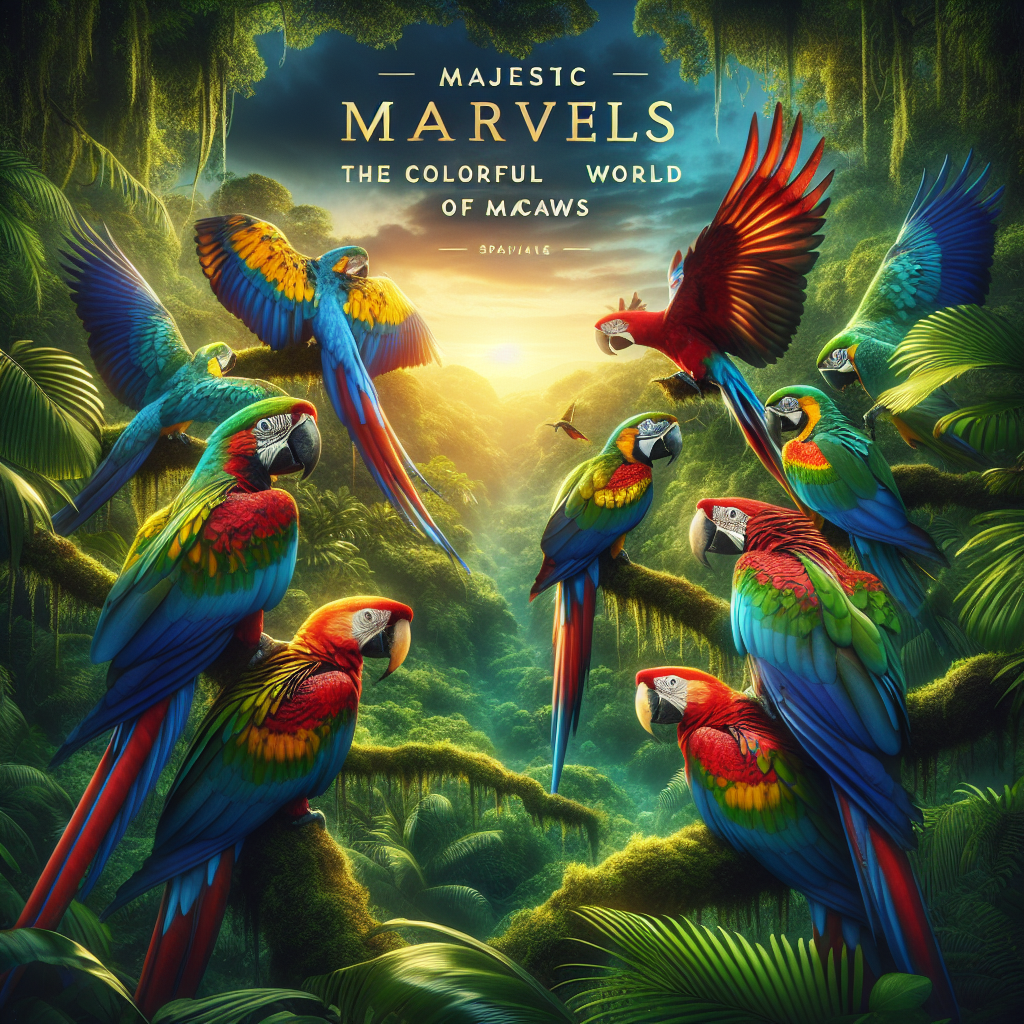Majestic Marvels: The Colorful World of Macaws

When we speak of vibrant wildlife, it is difficult not to conjure images of macaws—those magnificent birds adorned with an array of dazzling colors that captivate the hearts of nature enthusiasts. Characterized by their long tails, bright plumage, and charismatic personalities, macaws are truly the jewels of the avian world. In this article, we will explore the fascinating characteristics, habitats, behaviors, and conservation status of these stunning creatures.
A Colorful Tapestry: Species and Appearance
Macaws belong to the family Psittacidae and are primarily found in Central and South America. There are over 17 recognized species of macaws, each boasting a unique combination of colors and features that set them apart from one another. Some of the most iconic species include:
-
Blue-and-yellow Macaw (Ara ararauna): Known for its striking blue wings and yellow underbelly, this macaw is a symbol of tropical rainforests.
-
Scarlet Macaw (Ara macao): With vibrant red, yellow, and blue feathers, the scarlet macaw is perhaps the most recognized species.
-
Green-winged Macaw (Ara chloropterus): Named for its distinctive green shoulder feathers, this macaw combines rich reds and deep greens, creating a lush color palette.
-
Hyacinth Macaw (Anodorhynchus hyacinthinus): The largest of all macaw species, the hyacinth showcases an irresistible cobalt blue plumage and a striking yellow eye ring.
- Military Macaw (Ara militaris): This larger green macaw has splashes of red on its forehead and is known for its subtle beauty and intelligence.
These vibrant colors serve multiple purposes, including camouflage, mating displays, and social signaling. The feathers are not only beautiful but are also composed of microscopic structures that reflect light, giving them an iridescent quality that appears to shift in color with different angles of light.
Natural Habitat: Homes in the Canopies
Macaws flourish in tropical and subtropical regions, primarily inhabiting humid rainforests, woodlands, and mangroves. They are arboreal creatures, often found high in the canopy where they feed on fruits, nuts, seeds, and flowers. Their strong, curved beaks are adept at cracking open tough shells, allowing them to access nutritious seeds and fruit pulp. These clever birds are also known to use their beaks and feet as tools to manipulate their environment.
The social structure of macaws is fascinating. These birds are highly intelligent and are known for their complex vocalizations and social interactions. They typically live in pairs or small family groups, establishing strong bonds with their mates. Their loud calls—often described as squawks, screams, or whistles—resonate throughout the forest, signaling their presence to both potential mates and rivals.
The Importance of Conservation
Despite their striking beauty and intelligence, many macaw species face significant threats. Habitat destruction due to deforestation, illegal wildlife trade, and climate change are some of the leading challenges contributing to their declining populations. The International Union for Conservation of Nature (IUCN) classifies several macaw species as vulnerable or endangered, making their conservation a critical priority.
Organizations around the world are working tirelessly to protect these majestic birds and their habitats. Conservation efforts include reforestation, habitat preservation, and education initiatives aimed at raising awareness about the threats faced by macaws and the importance of biodiversity.
In some regions, ecotourism programs have become increasingly popular, allowing people to witness the beauty of macaws in their natural habitats while supporting local conservation initiatives. This symbiotic relationship benefits both the birds and the communities that protect them.
A Symbol of Beauty and Intelligence
Macaws are more than just avian spectacles; they represent the intricate balance of ecosystems and the need for greater awareness and action towards conservation. Their playful nature, social bonds, and stunning beauty have made them a favorite among birdwatchers and nature enthusiasts. Whether soaring through the skies or perched high up on treetops, macaws continue to inspire awe and appreciation for the natural world.
In conclusion, as we celebrate the colorful world of macaws, it is vital to remember our responsibility to protect them and their habitats. By promoting awareness, supporting conservation efforts, and celebrating these incredible birds, we can ensure that future generations will also marvel at the breathtaking beauty of macaws in the wild. Their vibrant plumes and captivating personalities are not just a feast for the eyes but a reminder of the rich diversity our planet holds, deserving of our respect and protection.